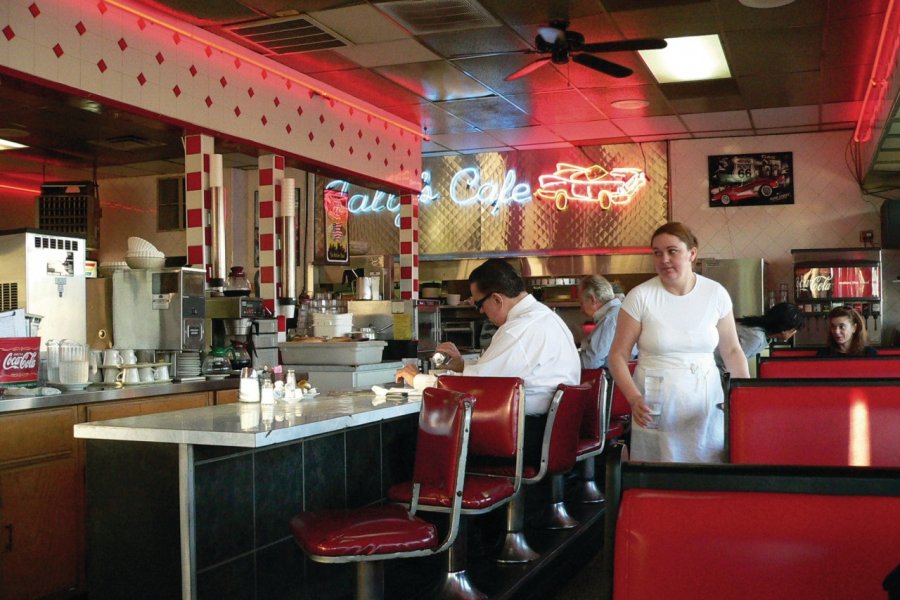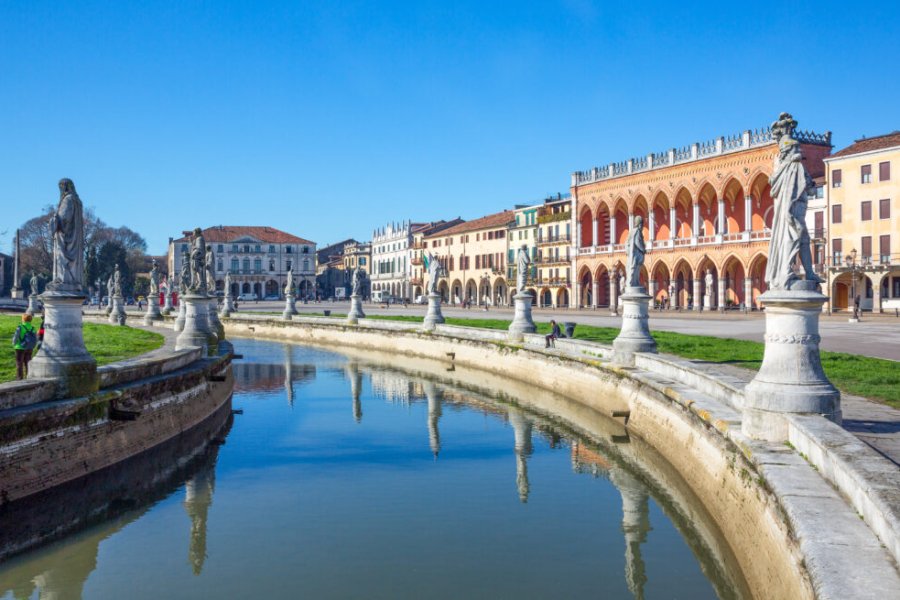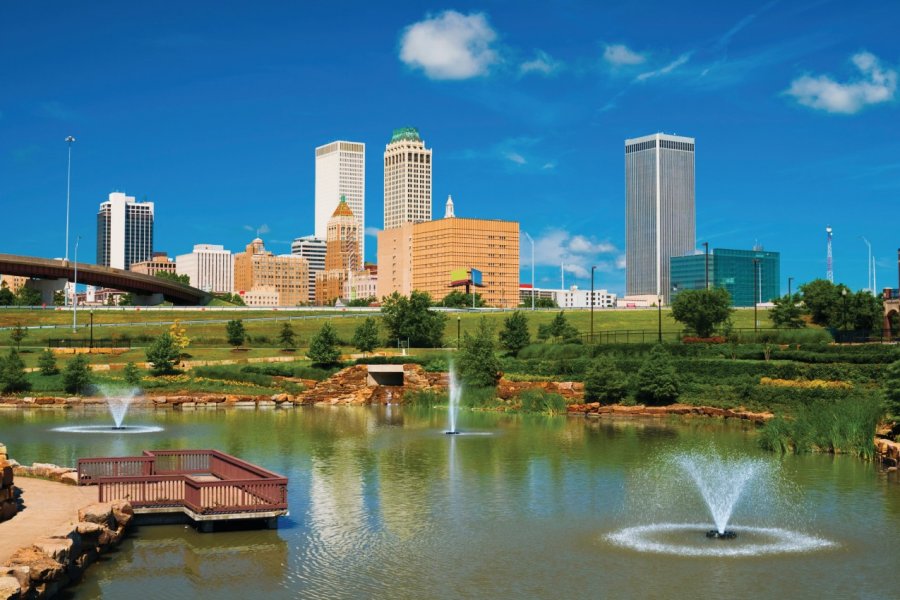Travel Guide Tulsa
Find an accommodation
Advertising
Tulsa, with a population of 392,000 excluding the metropolitan area, is the second largest city in Oklahoma after Oklahoma City. It is also the birthplace of Cyrus Avery, the father of Route 66. Founded in 1879, numerous oil and gas deposits were discovered here in 1901. After the discovery of the Glenpool oilfields, 15 miles to the south, Tulsa proclaimed itself the "oil capital of the world". Black gold allowed it to resist the Great Depression and to ensure the wealth of its population. In spite of its history strongly marked by this exploitation, it is interesting to note that Tulsa experienced from May 30 to June1 , 1921, a very important race riot against the black population, known as the Tulsa Race Riot, which resulted in 45 deaths (official), 800 injuries and the destruction of hundreds of homes in the Greenwood neighborhood, known today as Black Wall Street (Negro Wall Street at the time of the events). A museum dedicated to this tragedy opened in 2021, in the neighborhood of the tragedy. Known as Terra Cotta City in the late 1920s, Tulsa still has many Art Deco buildings listed on the National Register of Historic Places. Three internationally known architects were particularly prolific in the city during this period: Frank Lloyd Wright (Westhope Building, 1929, also known as the Richard Lloyd Jones House, at 3700 South Birmingham Avenue), Barry Byrne (Christ The King Church, 1928, at 1520 South Rockford Avenue) and Bruce Goff (Boston Avenue United Methodist Church, 1929, at 1301 South Boston Avenue). In the early 1980s, Tulsa was hit hard by the sudden depletion of oil fields. The giants of the industry moved to Houston, Texas, and it wasn't until 1992 that the city's efforts to rebuild the city began. Since 2007, Tulsa has experienced continued economic development, with aerospace, finance, telecommunications, high-tech, manufacturing and, to a lesser extent, tourism as the main industries. Today, the city's development follows the Vision 2025 project (vision2025.info). Very green and well developed for pedestrians and cyclists, Tulsa has many parks, including the Tulsa Municipal Rose Garden (Woodward Park, at 2435 South Peoria Avenue), a botanical garden where over 250 varieties of roses are planted. The city's museums include the Philbrook Museum of Art, the Gilcrease Museum (temporarily closed in 2022) and the Sherwin Miller Museum of Jewish Art, as well as the Tulsa Air and Space Museum & Planetarium and even the zoo. Jazz fans should not miss the Oklahoma Jazz Hall of Fame (temporarily closed in 2022). Tulsa also offers many entertainment venues (the Tulsa Ballet Theater, the Tulsa Opera, the LOOK Musical Theatre (temporarily closed in 2022), etc.). The centerpiece of Downtown, however, is the Tulsa Theatre (formerly the Brady Theater - 105 West M.B. Brady), Tulsa's largest performance venue, opened in 1914 and listed on the National Register of Historic Places. The Tulsa Geosciences Center closed permanently as a result of the covid-19 crisis.
What to visit Tulsa?
Advertising
Weather at the moment
Advertising
Organize your trip with our partners Tulsa
Transportation
Book your plane tickets
Car Rental
Boat rental
Accommodation & stays
Find a hotel
Holiday rental
Find your campsite
Tailor-made trip
Immersion travel
Services / On site
Activities & visits
Find a doctor
Tulsa travel inspiration
Find unique Stay Offers with our Partners
Pictures and images Tulsa
Other destinations nearby Tulsa
25 km away
100 km away
















